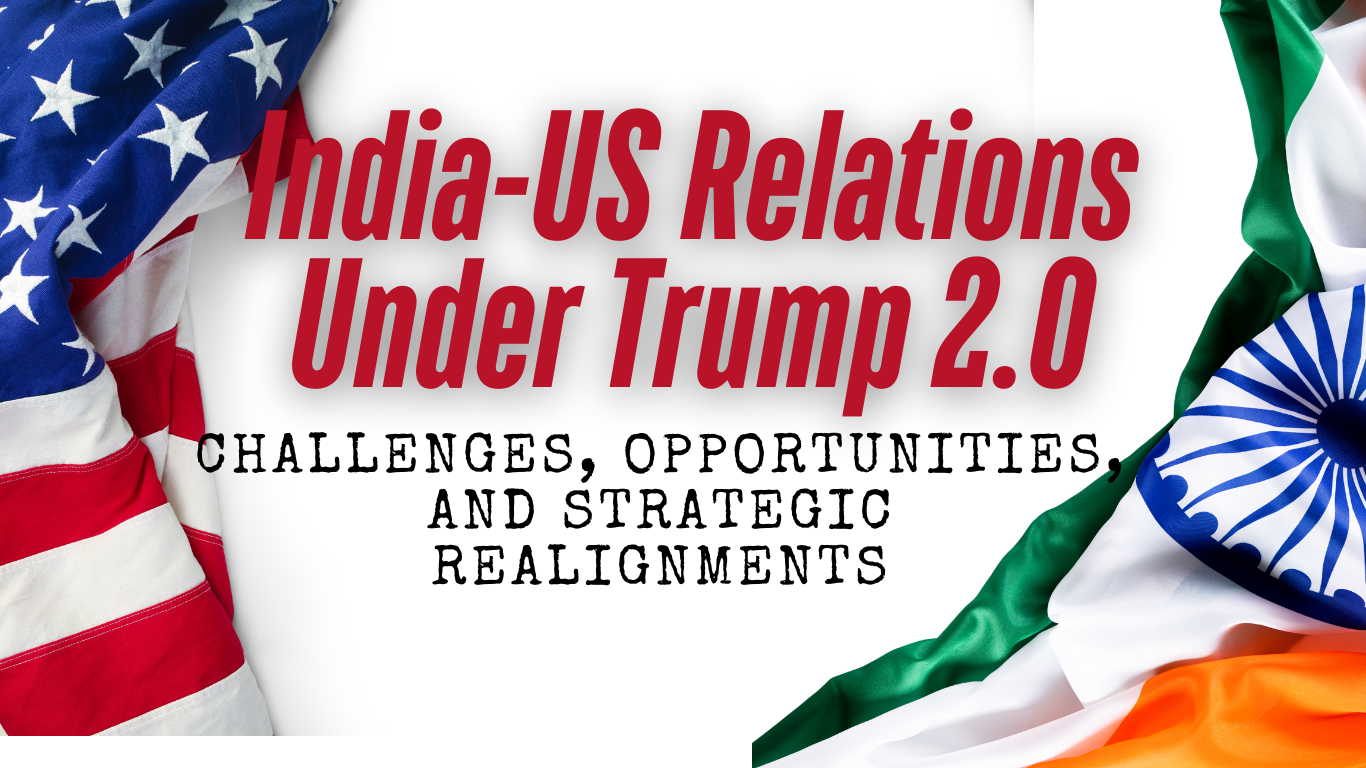As President Donald Trump embarks on his second term, his bold vision of a “revolution of common sense” promises to reshape America’s domestic and foreign policies. This transformative agenda, aimed at countering “liberal extremism” and bolstering American sovereignty, has significant implications for global relations, including the strategic partnership between India and the United States.
India, as a critical ally in the Indo-Pacific and a key trading partner, must carefully navigate the opportunities and challenges arising from Trump’s policies.
A Historical Perspective on India-US Relations
India-US relations have witnessed significant evolution over decades, overcoming historical hesitations to forge a strong partnership rooted in shared democratic values and strategic interests:
- Prime Minister Atal Bihari Vajpayee: Declared the two nations as “natural allies,” emphasizing mutual respect and shared geopolitical goals.
- President Barack Obama: Termed the partnership as “a defining relationship of the 21st century,” highlighting its global significance.
- Prime Minister Narendra Modi: In 2016, celebrated the transition from historical hesitations to a dynamic and enduring alliance.
These milestones underscore the steady strengthening of ties, with both nations collaborating on trade, technology, defense, and global governance.
India-US Relations Under Trump 1.0: Laying a Strong Foundation
During Trump’s first term (2017–2021), India and the US deepened their strategic partnership through significant initiatives:
1. Geopolitical Cooperation:
o Revived the Quad Initiative with Japan and Australia, emphasizing a free and open Indo-Pacific region.
o Renamed the US Pacific Command to the US Indo-Pacific Command, reflecting India’s strategic role.
2. Personal Diplomacy: The close rapport between Trump and Modi, highlighted by events like “Howdy Modi” and “Namaste Trump,” fostered a spirit of mutual cooperation.
3. Defense and Security:
o Designated India as a Major Defense Partner, enhancing defense collaboration and arms trade.
o Strengthened counterterrorism cooperation and intelligence-sharing mechanisms.
Economic and Trade Cooperation: A Pillar of Partnership
Economic ties remain a cornerstone of India-US relations:
1. Trade: The US is India’s largest export destination for goods and services, fostering robust economic interdependence.
2. Foreign Direct Investment (FDI): US FDI in India totaled $51.6 billion in 2022, signaling investor confidence in India’s growth potential.
3. Technological Advancement:
o India’s elevation to Strategic Trade Authorization Tier 1 status in 2018 allowed license-free access to critical US technologies.
o Collaborations in sectors like clean energy, blockchain, cyber sciences, and space exploration reflect a growing technological partnership.
Trump 2.0: A Vision for Transformation
In his inaugural address for a second term, President Trump outlined an ambitious domestic and international agenda, signaling shifts that will impact global relations:
1. Economic Revival: Focused on reducing inflation, promoting energy independence, and expanding domestic manufacturing.
o Announced the creation of an External Revenue Service to tax imports, complementing the Internal Revenue Service, with the goal of boosting American industries.
2. Foreign Policy Realignment: Emphasized “America First,” prioritizing border security over foreign conflicts.
o Adopted a transactional approach to alliances, focusing on economic and strategic gains.
3. Social and Political Transformation: Pledged to reverse liberal policies on free speech, identity politics, and environmental mandates, aiming to restore traditional American values.
India-US Relations under Trump 2.0: Opportunities and Challenges
India’s relationship with the US under Trump’s second term is poised to evolve, with potential benefits and hurdles:
Opportunities
1. Strategic Collaboration: Continued focus on the Indo-Pacific region aligns with India’s strategic interests, particularly in countering China’s influence.
o The Quad Initiative is likely to gain momentum, enhancing regional security and cooperation.
2. Technological Innovation: Joint ventures in emerging technologies such as clean energy, artificial intelligence, and advanced manufacturing can bolster India’s innovation ecosystem.
o Collaboration in space exploration and health security opens new avenues for bilateral engagement.
3. Economic Gains: While Trump’s protectionist policies pose challenges, India could benefit from the reorientation of global supply chains, particularly as companies look to diversify away from China.
Challenges
1. Trade and Tariff Policies: Trump’s emphasis on taxing imports to promote domestic industries could adversely affect India’s exports to the US.
o The transactional nature of Trump’s trade policies demands meticulous negotiations to avoid unfavorable terms.
2. Immigration Policies: Restrictive visa regimes, particularly for H-1B holders, could impact India’s IT sector and skilled professionals working in the US.
3. Strategic Autonomy: India must balance its growing partnership with the US while maintaining independence in foreign policy, particularly concerning its relations with Russia and other global powers.
4. Market Uncertainty:
o Indian markets remain cautious as Trump’s economic policies unfold, with potential impacts on the rupee-dollar exchange rate and investment flows.
A Transformative Foreign Policy Approach
Trump’s foreign policy in his second term reflects an assertive and transactional stance:
1. Focus on Strategic Interests:
o Prioritizing defense of US borders and national interests over distant conflicts.
o Emphasizing fair trade and reciprocity rather than multilateralism and liberal internationalism.
2. Global Implications:
o Trump’s policies on the Indo-Pacific, Eurasia, and the Gulf of Mexico (renamed as the “Gulf of America”) could redefine power dynamics.
o His emphasis on being a “peacemaker” signals a reluctance to engage in extended conflicts, which may influence India’s strategic calculations.
Conclusion
India-US relations under Trump 2.0 represent a mix of opportunities and challenges. While shared interests in trade, technology, and defense provide a strong foundation, the transactional nature of Trump’s policies requires India to adopt a proactive and balanced approach. By leveraging its strategic strengths, addressing domestic reforms, and maintaining strategic autonomy, India can sustain and enhance its partnership with the US in this transformative era.
As the global order continues to shift, the India-US alliance will play a pivotal role in shaping regional and global dynamics, ensuring stability and progress in an increasingly complex world.
| Main Question: Examine the evolution of India-US relations over the years. How have the bilateral ties transformed from historical hesitations to a strategic partnership, and what are the key milestones in this relationship? |







